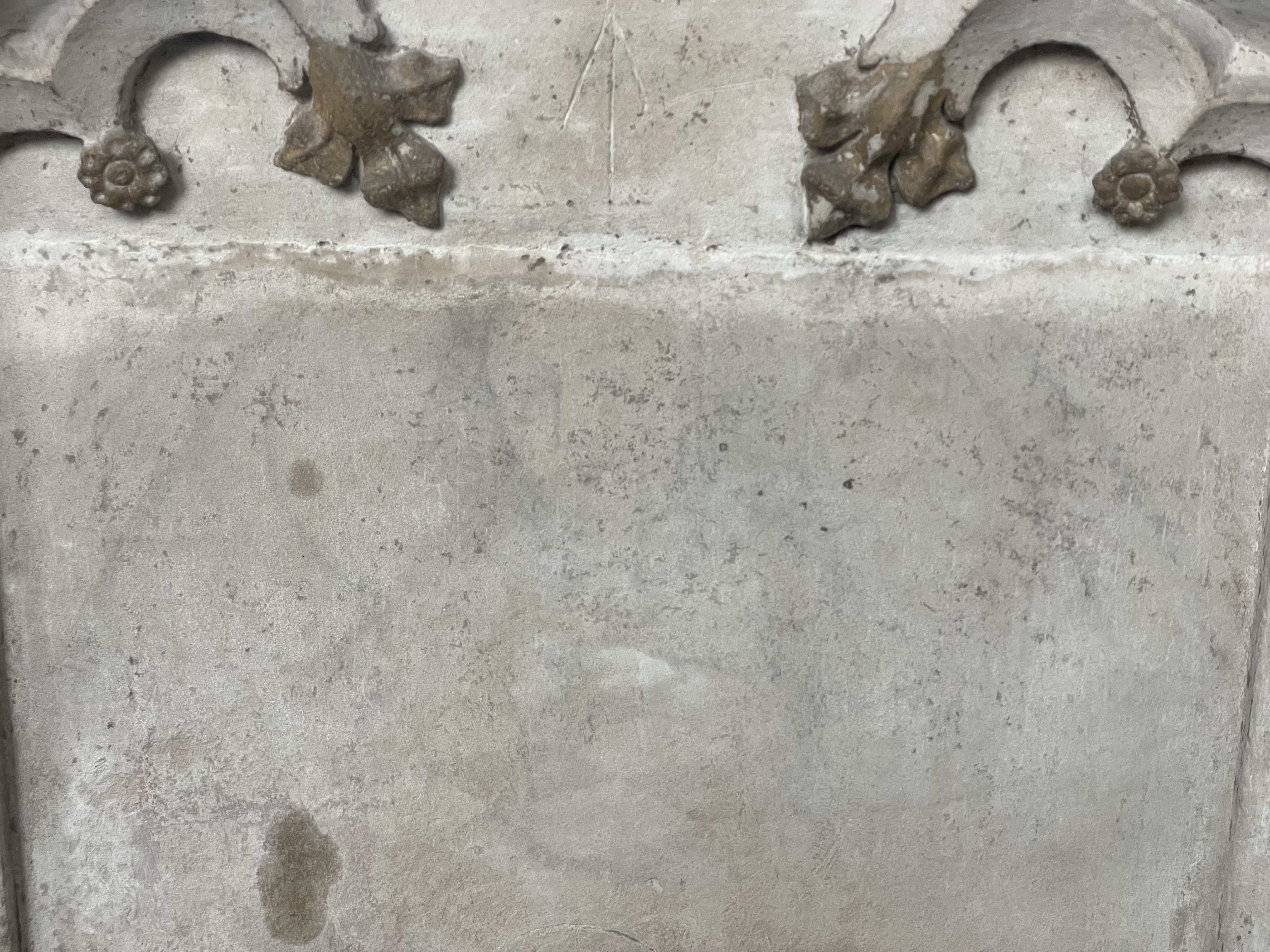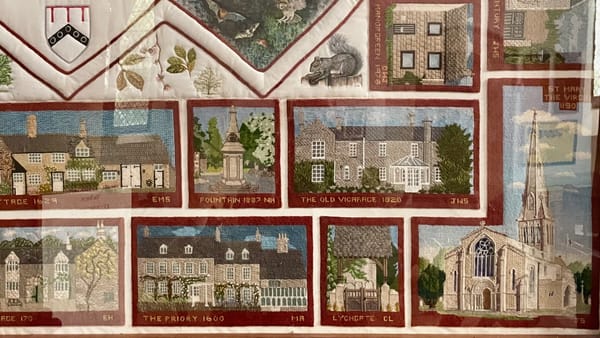
12 July 2022
Greater Manchester

I’m out on a run. On my way up Cinder Hill, I pick up a wind-blown branch to place beneath the Whitten Tree.
The Whitten is a shrub where I mark my presence by placing a twig beneath its branches. I cross the motorway bridge with the branch in my hand. I’ve taken up the habit of opening out my arms and gliding across the bridge like an eagle over the hum drum of the daily commute. As I do, I think of my next journey - a 4000 year old yew, a doom wall that speaks and a fine Buckinghamshire church. As I finish the bridge, a square-faced dog strikes from nowhere, out from the scrub, hackles raised. It heads straight for me. Its hooded owner hovers a short distance away, unconcerned. I stand there: motorway-wings clipped, milk-bottle legs, twig-in-hand, head in academia with my feet full of dog slobber.
I feel a bit of a knob.
Shaken, I head up to the hill, heart thumping faster than usual. I feel transient, un-hooked. I pause at the Whitten and instantly feel better - at the base are sticks that are woody memoranda - twigs I’ve thrown in a moment with a thought attached.
"Shaken, I head up to the hill, heart thumping faster than usual."

The accumulated wisdom beneath the summer growth has made an insignificant shrub meaningful to me. As I run back down the hill, wary of the dog, but bolstered by broken branches, it dawns upon me how vital meaning is to us; how it is at the crux of everything we do; how we extract objects and structures from our timelines and use them to negotiate our lives.
Amy Liptrot says: “ We are meaning-making machines. I use all these little personal myths and totems to hold myself together.”
This week I visit the ancient tree and the doom laden wall and finally (instead of the Buckinghamshire church) the Beauchamp chapel at St. Mary’s in Warwick. The chapel is full of presence, a sense of place that resonates from being at the heart of the Tudor zeitgeist. I’m struck by the potent bronze effigy of Beauchamp at the centre of the chapel, but it’s something ephemeral that impacts me most on a blind arcade, hidden behind a kneeler.
Emerging from beyond the lime wash is a ghost angel. The faint outline of a face and wings. I’m told that the eye emerged first and then the face and that, as the wash wears away, more might be revealed. I take a photo with my device and share it on social media. I’m inundated with a diverse range of interpretations. Some can see it and others can’t. Some glimpse wings and others not. Some interpret a spiritual narrative in the slow reveal, others are more scientific in their observation.
"Emerging from beyond the lime wash is a ghost angel."

Through the photograph, dozens and dozens of people are able to add their own meaning to the faint outline of the figure at St. Mary’s. The angel is a sticky entrapment that shape-shifts relevancy to each individual. The stories people attach create meaning and meaning creates ties and obligations. It’s difficult to envisage the removal of the angel without a significant response in its favour.
It’s 2017, and I’m stood shivering on a dark December day within the nave of a medieval church. I’m part way through photographing the re-ordering of the church. Part of the arcade is to be partitioned off to provide new facilities and, whilst I’m there, I see a joiner prepping to fit a new wall brace to a medieval column. He’s about to drill a big hole into the column through a series of faint hexafoil circles. I stop him and explain the significance of the circles. I tell him that they are medieval, that they are possibly ritualistic, that they represent the unspoken and undocumented lives of normal people. The joiner manages to work out a way of installing the brace so that the marks remain intact. Now that they have been ennobled with a story, the simple scratch marks gain a relevancy that moves the joiner to save them.

"If only I’d managed to catch the builders in Middleton, Manchester several months back who demolished the bays of a house by Arts and Crafts genius, Edgar Wood."
If only I’d managed to catch the builders in Middleton, Manchester several months back who demolished the bays of a house by Arts and Crafts genius, Edgar Wood. The bays were the vowels and consonants in Wood’s bricks and mortar ode to his home town. He invested every curve and line with meaning. I’m a Middleton boy, and I can’t tell you how the irreparable and avoidable loss of the spirit of the building dented my identity, my self. To me it was a Liptrot totem that helped make sense of who I am.
I have seen many other places and objects lost or destroyed because there was nobody to tell their story. Their significance had been forgotten or hidden, or overwhelmed by cost benefit. Other places, on the brink of destruction, have been saved by a sudden burst of chatter forming a narrative net of safety.
In all of this, Ventura is my guiding light :
“ What each of us must do is cleave to what we find most beautiful in our human heritage - and pass it on……And to pass these precious fragments on is our mission.”
This Genius Loci Digest is my response to his call to arms.
Power to the storytellers, the photographers and the artists, for they hold more influence than we give them credit for: the skill to teach others how to see; the potency to save buildings and places that might inform our future; the capacity to give salve to collective identity and personal wellbeing. Credence to those that shine a light, point their lens or ink their pen about the small, seemingly insignificant things, that give our lives a meaning beyond measure.

View next entry:

More about this Digest:


Can you help support me on my journey by becoming a Member?
Help keep Woody on the road and support the Genius Loci Digest.
Explore th Benefits







Member discussion